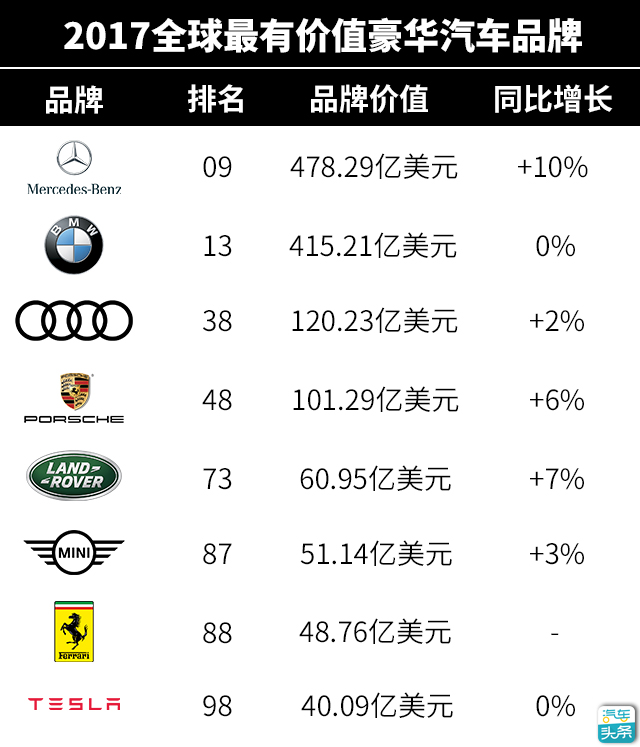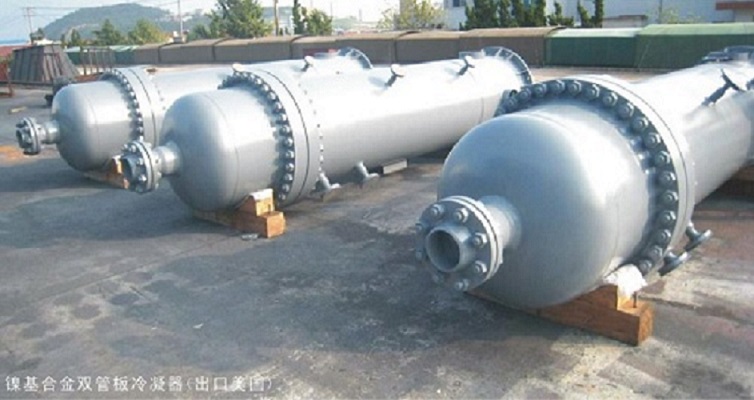
Recently, Interbrand’s Top 100 Most Valuable Global Brands announced that Mercedes has become the highest value car brand for luxury brands, while Audi has placed third on Porsche.
In the 2017 Top 100 list, 15 auto brands and 8 luxury brands are listed. It is understood that the 2017 Top 100 list focuses on the degree of globalization of the brand and the sustainability of its development. It is mainly measured in terms of corporate performance, influence and brand protection, and the company’s continuous income capacity.

Specifically, Mercedes-Benz ranks first among luxury brands with a brand value of US$47.829 billion and a year-on-year increase of 10%. At the same time, it ranks second in the value list of automotive brands and has reached the top ten in the global brand value list. Followed by BMW, it won third place in car brand value and second in luxury car brand.
Occupy the third place in the world's most valuable luxury car brand in 2017 is Audi, with the luxury car brand Porsche with nearly 2 billion advantage. However, the brand values ​​of Porsche and Land Rover have increased significantly.
It is worth noting that Ferrari's brand value was independently assessed after it was independently operated, and it entered the world's top 100 at one stroke. In addition, Tesla became the only non-traditional car company in the luxury car brand list, becoming the "X factor" of this list.
At present, automakers are facing the dual challenge of new energy and the Internet. The high “value†of Tesla’s brand values ​​is a reflection of consumers’ recognition of their product forms and brand concepts. In the future, traditional auto manufacturers need to continue to maintain To increase the brand value and compete with the brand value of luxury brands, it may be necessary to explore the new meeting point of user needs and enterprise development through the “Tesla Phenomenon†and expand the capabilities provided by their own services and experiences.
Water-Cooled Condenser types
Commercial water-cooled condensers are of three basic types:
- Shell and coil water-cooled condenser: the shell condenser is a steel tank enclosing copper tubes inserted in the shell. As water flows through the tubing, it condenses hot gases into a fluid and the bottom part of the shell receives the fluid. The benefits of this type of separate condensers include compact design and elimination of fans. Since the coils are completely surrounded by a steel shell, the mechanical cleaning of such coils is almost impossible.
- Tube within a tube (double-tube) water-cooled condenser: the second type of these condensers is double-tube. One tube is put within another one in a way that water flowing through the inside tube cools the refrigerant in the outside tube. The construction of this condenser can be either in the cylindrical spiral or in the rectangular style.
-
Shell and tube water-cooled condenser: shell and tube is the most common type of such condensers in chemical processing plants which consists of number of straight water tubes enclosed by a large cylindrical shell. Tube diameters of 15mm to 50mm are common, while the number of tubes in the condenser varies from as few as six or eight to as many as one thousand or more. The end-plates of the condenser are removable to allow mechanical cleaning of the water tubes.
Advantages of a Water-Cooled Condenser
- Where there is restriction for air-cooled condenser, water-cooled condenser is a perfect replacement.
- There is thermal energy recovery to be used in other heating processes.
- This type of condenser can be housed indoors.
- A water-cooled system typically lasts years longer, assuming maintenance is not neglected.
- It has higher heat transfer rate.
- It consumes far less overall energy, which can lead to savings on energy costs and consumption.
- It does not require any external power.
- Since water cooling is more efficient than air cooling, time required for cooling is less.
- Length of the condenser pipe is reduced which decreases the compressor work and thus increases its efficiency.
- With the incorporation of these condensers, the net weight of the system increases.
Disadvantages of a Water-Cooled Condenser
- Using water as a cooling medium might cause corrosion problem.
- Use of water as a cooling medium may result in the formation of scales in the supply line.
- Because of shortages of fresh water around the world, few countries can afford to run water to waste.
- Using water tank makes the system bulky which results in problem during domestic use.




Condenser Descalers,Surface Condensers,Process Condenser,Air Condenser Condensers
Jiangsu Juding Environmental Protection and Energy-saving Equipment Manufacturing Co. , Ltd. , https://www.filter-plant.com
![<?echo $_SERVER['SERVER_NAME'];?>](/template/twentyseventeen/skin/images/header.jpg)